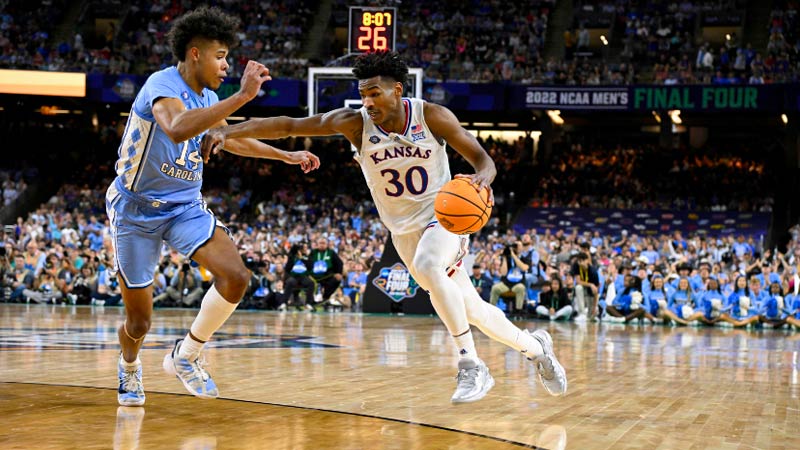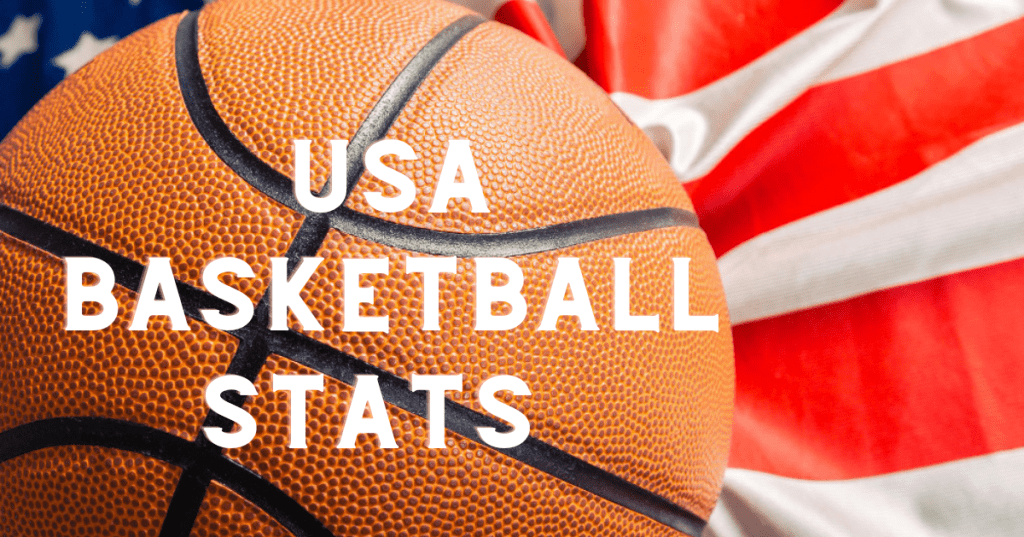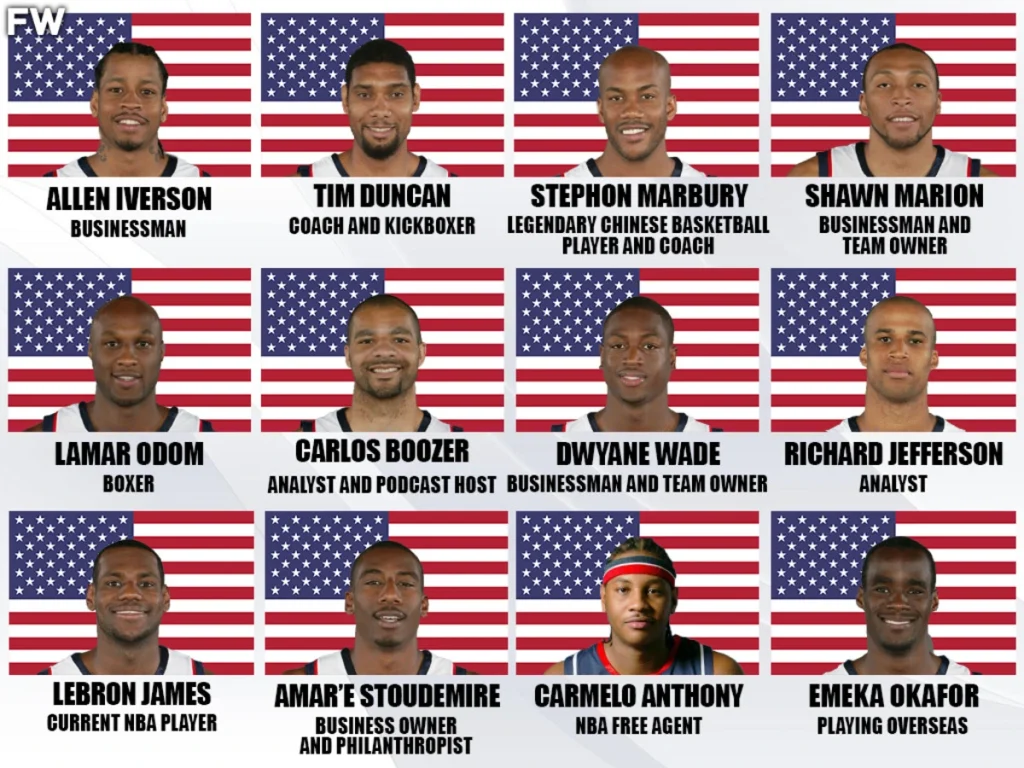A standard basketball game typically time around 2 to 2.5 hours. This includes four quarters, each lasting 12 minutes, with a halftime break in the middle. Actual game duration can vary due to factors like timeouts, fouls, and stoppages. Influencing the overall time it takes to complete the match.
In Basketball games players and coaches plan their strategies and use time wisely. It helps keep fans engaged, as they have expectations about the game’s duration. Broadcasters, venues, and referees also rely on this information for scheduling, logistics, and managing the flow of the game.
Basketball Game Duration

Quarters and Halftime
Basketball games are typically divided into four quarters. Each quarter has a standard duration, usually 12 minutes in the NBA and 10 minutes in college basketball. The halftime break comes between the second and third quarter.
Half-time provides players and coaches a 15 minutes rest period. This interval allows teams to strategize their plans and make adjustments for the match. Players and coaches recharge for the remainder of the game.
NBA vs. College Basketball Timing
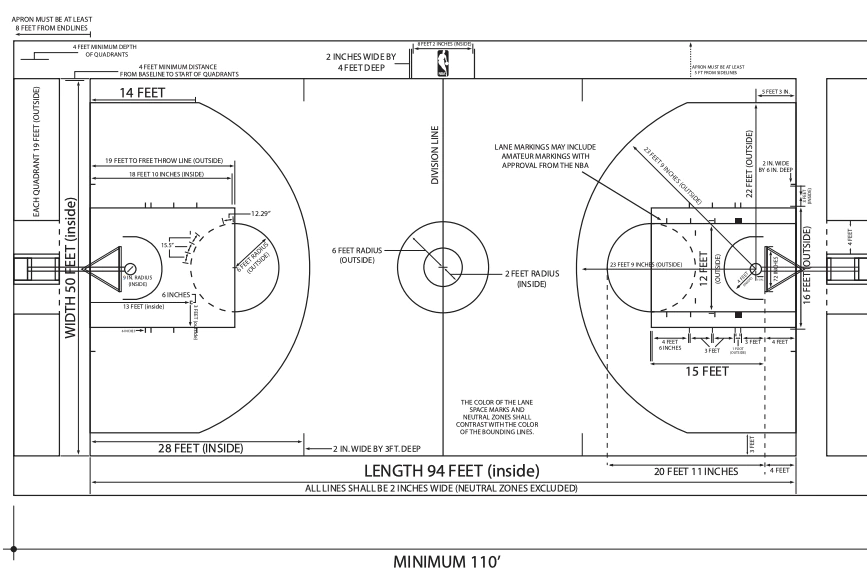
The fundamental structure of quarters remains the same. There are timing variations between NBA and college basketball games. NBA quarters are 12 minutes long, resulting in a total regulation time of 48 minutes.
In contrast, college basketball quarters are 10 minutes each, contributing to a regulation game duration of 40 minutes. The differences in game length can impact pacing and playing strategies at various levels of competition.
International Variations
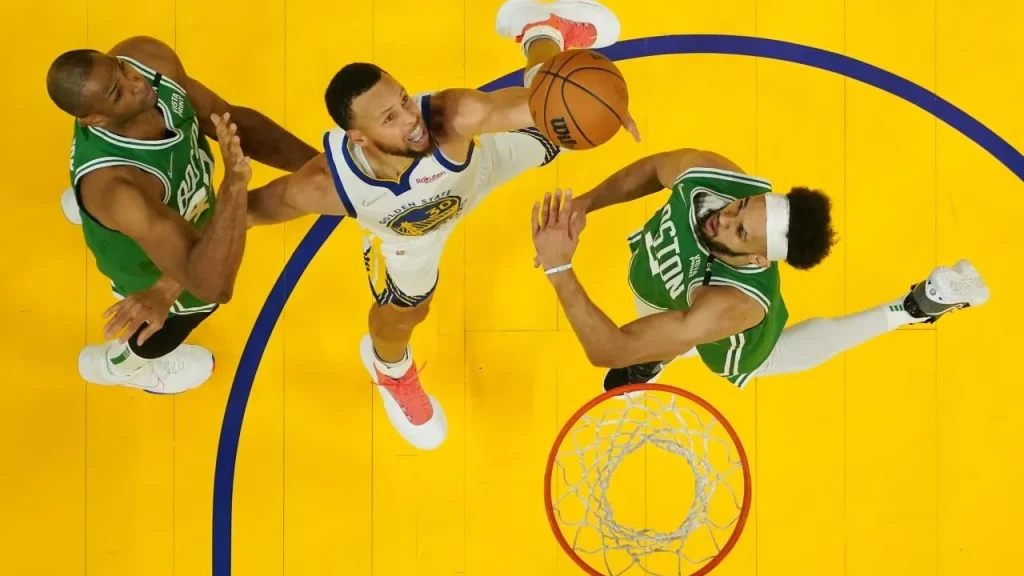
International basketball also features variations in game duration. International Basketball Federation competitions, including the Olympics and FIBA World Cup, use 10-minute quarters, aligning more closely with the college basketball format. This international standardization allows for consistency in the rules and duration of games on a global scale, fostering a unified playing experience.
Game Stoppages and Timeouts
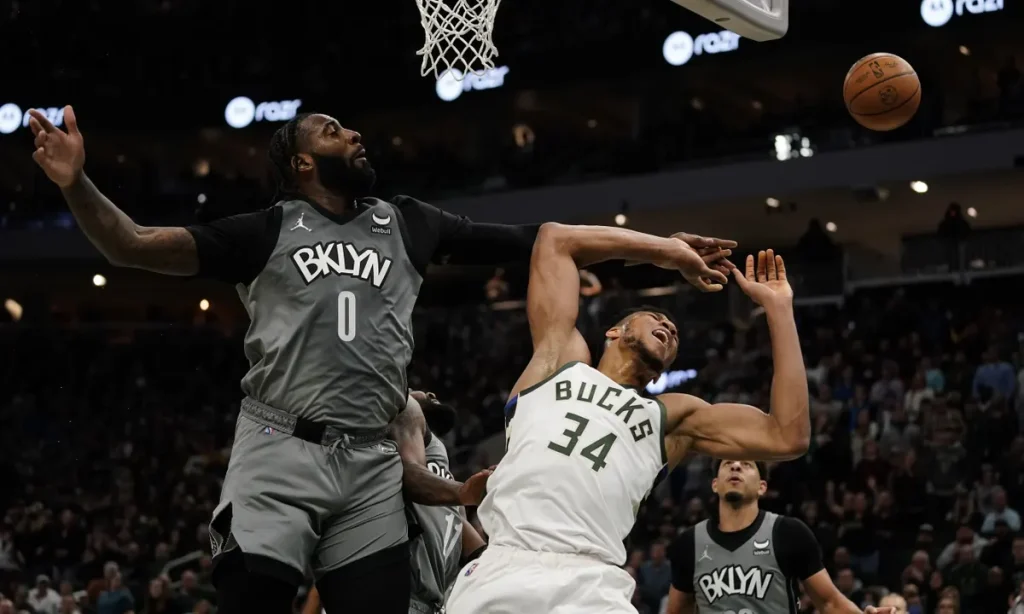
Fouls
In basketball, fouls occur when a player makes illegal physical contact with an opponent. When a foul is committed, the referee blows the whistle, signaling an immediate stoppage of play. Depending on the type of foul and the situation, the fouled player may be awarded free throws, allowing them to score without interference.
The stoppage provides a moment for players to reset and strategize, and it often leads to crucial moments that can sway the momentum of the game. Additionally, team fouls can accumulate, leading to bonus situations where free throws are awarded even for non-shooting fouls, intensifying the impact of fouls on the game’s flow.
Out-of-Bounds
When the basketball goes out of bounds, play comes to a halt, and possession of the ball is awarded to the opposing team. This stoppage is a result of a player mistakenly stepping out of bounds, an errant pass, or a defensive player deflecting the ball beyond the boundary lines. The out-of-bounds rule ensures fair play and proper ball control.
It also offers a moment for teams to regroup and formulate their strategies during inbound plays. The precision required to keep the ball in play adds an element of skill to the game, and the resulting stoppage allows for brief pauses that contribute to the overall rhythm and excitement of basketball.
Violations
A shot clock violation occurs when a team fails to attempt a field goal within the specified time limit. In professional basketball leagues like the NBA, teams typically have 24 seconds to take a shot. If a team cannot make a shot within this time frame, the referee blows the whistle, signaling a stoppage.
Traveling is a fundamental violation in basketball that occurs when a player holding the ball takes too many steps without dribbling. When a traveling violation is detected by the referees, the game stops, and possession is awarded to the opposing team.
Double dribble violations happen when a player dribbles the ball, stops, and then resumes dribbling. It occurs when a player dribbles with both hands or starts dribbling again after stopping. When a double dribble is spotted, the referee calls a stop to play, and the opposing team gains possession.
Jump Balls
The game begins with an opening jump ball at center court. Two players, one from each team, stand facing each other, and the referee tosses the ball into the air. The players jump to try to catch it, signaling the start of the game.
In situations where possession needs to be determined, such as after a held ball or a simultaneous possession scenario, teams engage in an alternating possession jump ball. The possession arrow indicates which team gets the ball.
If two opposing players gain simultaneous possession of the ball and neither can advance, a jump ball is called. The referee stops play, and a new possession is determined through a jump ball situation.
Timeouts
Timeouts are strategic breaks called by teams or sometimes during certain game situations.
Strategic Planning
Timeouts in basketball serve as crucial moments for strategic planning. Coaches use these breaks to communicate essential instructions, discuss game strategies, and make necessary adjustments. During a timeout, the coach gathers the team to provide insights into the opponent’s tactics, address weaknesses, or reinforce successful plays.
This strategic planning aspect is vital, especially in critical moments of the game, such as the final minutes of a close contest. Coaches aim to optimize their team’s performance by leveraging timeouts to outmaneuver the opposing team.
Rest and Recovery
Timeouts offer players a valuable opportunity for rest and recovery. The fast-paced nature of basketball demands intense physical exertion, and players can become fatigued during extended stretches of play. During timeouts, players gather on the sidelines, hydrate, and receive brief moments of respite.
This period of rest is essential for maintaining optimal performance throughout the game. Additionally, timeouts provide a mental breather, allowing players to refocus, regroup, and approach the next segment of the game with renewed energy. Coaches may strategically use timeouts to ensure that key players are well-rested for crucial moments,
Game Management
Timeouts are often employed as a tool for effective game management in basketball. Coaches use these breaks strategically to control various aspects of the game. For instance, if a team is trailing and needs to conserve time, a well-timed timeout can halt the clock and allow the coach to devise a plan for a quick score.
If a team is leading and wants to control the pace, a timeout can disrupt the opposing team’s momentum and slow down the game. Game management timeouts are crucial in situations where clock management, score differentials, or situational awareness can impact the overall outcome.
Substitution
Substitutions play a key role in maintaining player energy levels and adapting to different phases of the game. Coaches use timeouts to strategically make player substitutions, bringing in fresh legs or specialized skills to address specific game situations. Substitutions allow teams to capitalize on individual player strengths.
Adjust to the opponent’s tactics, or provide rest to fatigued players. Coaches must consider the chemistry of their lineup, the specific skills needed on the court, and the overall game strategy when deciding on substitutions. The stoppage during a timeout provides an opportune moment for substitutions,
Which factors influence the game length?
These things help us see why basketball games vary in how long they go on.
Instant Replays
Instant Replay is like a special video review in basketball. Sometimes, when there’s a close call or a tricky situation, referees can use instant replay to watch the play again on a screen. This helps them make sure they get the decision right.
If the ball goes out of bounds, and it’s not clear who touched it last, the referees can use instant replay to see exactly what happened. This can take a bit of time because they want to be sure about the call. While they’re watching the replay, the game clock stops, and everyone waits to see what the referees decide.
Injury
Players can get hurt during a basketball game. If a player gets injured, the game stops so that the team’s medical staff can come and help the player. They want to make sure the player is okay and can continue playing safely.
Injuries can vary in seriousness, from a minor issue that takes a short time. To check more serious situations where the player may need more attention. When an injury happens, it’s important to take the time needed to care for the player, even if it means a pause in the game. The referees and medical staff work together to decide when it’s okay for the game to start again, keeping the players’ well-being a top priority.
Scoring Pace
Scoring pace means how fast teams are making points in a basketball game. If teams are scoring a lot and making many shots, the game might move quickly. On the other hand, if there are fewer points and more missed shots or turnovers, the game could slow down.
If both teams are running up and down the court, making baskets frequently, the game will have a faster scoring pace. But if there are many stops and turnovers, it might take longer for each team to score, and the game could feel a bit slower. So, the pace of scoring affects how fast or slow a basketball game goes.
Game Flow
Game flow is like the rhythm or smoothness of a basketball game. When teams play well together, pass the ball efficiently, and avoid mistakes, the game flows nicely. Players move up and down the court, making plays and scoring points.
On the other hand, if there are a lot of mistakes, like turnovers or missed shots, it can disrupt the game flow. Imagine a game where the ball is constantly being turned over or there are many pauses. That can make the game feel a bit slow.
Television Broadcast
The television broadcast is when a basketball game is shown on TV for people to watch at home. When the game is on TV there are breaks called commercials. Kind of like mini-movies with ads for different things. These commercial breaks can make the game take a bit longer because they need time for the ads.
The TV broadcast might have its timeouts or breaks, and the game clock stops during these moments. This is because TV networks want to show certain things, like replays or interviews with players and coaches. When a game is on TV, it can affect how long it takes because they have their schedule for what they want to show.
Overtime periods
Overtime happens when the basketball game is tied at the end of the regular time. Instead of ending in a tie, the teams play extra time to decide the winner. Each overtime period is like a bonus round, and it has its clock. If a game goes into overtime, it means more time is added to figure out which team will win.
During overtime, the teams keep playing just like in the regular game, but the first team to score more points in that extra time wins. Sometimes, a game can have multiple overtime periods if the score is still tied after the first one. Overtime adds excitement and more chances for teams to win, but it also adds extra time to the overall length of the basketball game.
Conclusion
A basketball game’s length is a mix of different things that make the sport exciting. The game has set times, but factors like fouls and the ball going out of bounds can stop play. These stops create moments for teams to plan and strategize.
Timeouts are like special breaks for coaches to share important instructions and give players a quick rest. Over the years, basketball has changed a bit with new rules and ideas, affecting how long a game lasts.
The game isn’t just about playing for a specific time; it’s about dealing with challenges and making smart moves. Whether it’s a quick timeout or a game-changing play, the duration of a basketball game is about more than just the clock ticking. It’s about the thrill, strategy, and skill that make basketball a game loved by many.

